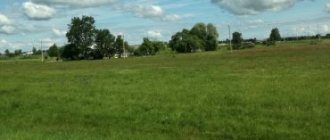The cadastral number for each property is unique and is assigned only once. Without it, it is impossible to carry out various legal actions: buying and selling, donating, inheriting, etc. It contains a maximum of information; some differences exist between the cadastral number of an apartment (house) and a land plot.
The procedure for assigning and requirements for real estate numbers is prescribed in the Law on Real Estate Registration No. 218-F3. With its help, all real estate objects located on the territory of the Russian Federation are identified; it is necessarily indicated in all information databases of the relevant government structures and organizations. Depending on the region and location of the object, a certain division is applied (Order of the Ministry of Economic Development No. 877 of November 24, 2015):
• cadastral district of the Russian Federation; • cadastral district of the district; • cadastral quarter of the district.
Each unit is assigned its own unique number. If during an inventory or other actions changes are discovered in the boundaries or sizes of land plots, technical characteristics of permanent buildings, then appropriate adjustments are made to the new number in accordance with the decision of the special commission. Changes affect only those values that require updating; all others remain the same.
If several objects are combined, the cadastral number changes completely. Those numbers that previously belonged to separate objects are liquidated, and the newly formed one undergoes new registration in accordance with current legislation. Outdated conventional numbers were assigned before 2005; they are distinguished from the cadastral number by dividing marks. In the cadastral part, the numbers are separated by colons, and in the conditional part by hyphens.
Find your plot on the cadastral map
Follow the link https://pkk.rosreestr.ru/, enter the site number on the left and click “Find”.
You will see the location of the site on the ground, as well as the characteristics of the site. Please note that in the land category there is: “Land of populated areas.”
If it’s in a different category and they sell you a plot or plot with a house and talk about individual housing construction or private subsidiary plots, this is already a bad sign.
Next, look at “Permitted use of the site”: good options are “Personal subsidiary farming”, “Individual housing construction”. If there is something else, for example “for dacha construction”, “for gardening” - this is already a reason to be wary.
On the right side of the cadastral map, in the list of layers, check the box “zones with special conditions for the use of the territory” and see if your site falls into such zones. If it does, additional verification is also necessary.
Method No. 1 - order an extract from the Unified State Register of Real Estate (I recommend)
As you have already noticed, there is no column “Copyright Holder” on the public cadastral map, therefore, in order to find out the owner of a land plot, you will have to order a paid extract from the Unified State Register of Real Estate (abbreviated as EGRN).
They cannot refuse issuance, since, according to Article 6 of the Federal Law “On State Registration of Rights to Real Estate,” registration is open. It follows that any individual or legal entity has the right to obtain information about land ownership by contacting the Unified State Register of Real Estate. In addition to the full name of the owner or tenant of the land plot, the extract will contain information about encumbrances, arrests and all existing restrictions. FSIS EGRN provides such data only on a paid basis and only in two options:
- For 870 rubles, you can go to the nearest MFC “My Documents” and order a paper version of the extract from the Unified State Register of Taxpayers there. Such a document will be signed by the registrar and have a large blue seal of Rosreestr. For legal entities, the extract costs three times more - 2,550 rubles.
- If you don’t have time for two trips to the MFC (the first to submit an application, the second to receive a document), then for 350 rubles you can order exactly the same extract from the Unified State Register, only in electronic form (if necessary, you can always print it ). To order, go to the “tab” on the public cadastral map. An electronic statement has the same legal force as a paper one.
Please note that in Rosreestr an extract from the Unified State Register costs 350 rubles (700 rubles for legal entities). If you want to find out the owner of a land plot cheaper, I recommend ordering a certificate through Quick Documents - this way you will receive a document for only 250 rubles. The order is completed within a day, the official data is from the Unified State Register of Russian Registers of Rosreestr.
Certificate from the Unified State Register of Real Estate, which I recently ordered through Quick Documents
Check your site's history
One way is to write the cadastral number of the plot in the search engine, then adding the word “prosecutor’s office”, “claim”.
Carefully review all search results.
Another way is to order an extract from Rosreestr for this plot, or better yet two: an extract about the current condition of the plot and an extract about the transfer of rights to the plot.
In them you will see how ownership of this plot was transferred, check the former owners of the plot for legal purity.
Method No. 2 - find out the owner of the land plot from the tax office or Administration
It happens that in the extract from the Unified State Register of Real Estate “The information necessary to fill out section 2 (copyright holder) is missing.” This is due to the fact that the land plot either belongs to the state or to the owner who registered ownership before the Land Code of the Russian Federation came into force in 2001. In this case, you will have to look for the owner of the land plot through a written application to the tax office or to the Administration on whose territory the land plot is located.
The disadvantages of this method are that you have to go to the tax office and personally contact the inspector. It will depend on your persuasiveness whether you receive information about the owner from the Register of Taxpayers or not. In any case, you already understand where to look for the owner of a land plot for free - you need someone who pays taxes for the land.
How to find out if there is a municipal road or not
1.5. To the property of the settlement
include public and non-public highways within the boundaries of populated areas, with the exception of federal, regional or intermunicipal highways, and private highways. The list of public roads of local importance is approved by a resolution of the Head of the municipality (settlement).
1.8. The property of individuals or legal entities includes highways built by individuals or legal entities at their own expense on land plots provided to such persons in the manner established by land legislation, or highways transferred into the ownership of such persons in accordance with the legislation of the Russian Federation.
Why do you need to know the category?
Owners of plots, having looked at the documents for the plot, can find out from them what category it belongs to.
It will also be indicated for what purposes it can be used .
At the moment, there are several categories, all of them are listed in the Land Code:
- settlement lands;
- forest fund;
- agricultural purposes;
- stock;
- forest fund;
- land;
- industry, defense, energy, etc.
If you visit the administration of a city or small town, you can familiarize yourself with the area plan. It shows how the lands are divided according to their intended purpose (Articles 7 - 8 of the Land Code of the Russian Federation). Similar information is available in the State Cadastre.
Land plots can be divided :
- Government . It has the right to determine the territories that will be federal property.
- Subjects of the Russian Federation . The administration determines the territories included in the subject.
- The distribution of the remaining lands is handled by local governments . This takes into account social, economic, as well as natural and other factors that influence the distribution process.
This approach was not taken as a basis by chance. This was done specifically so that the territories, during their exploitation, do not lose their useful properties inherent in them initially. These properties are of great value; they are considered irreplaceable. But it should be noted that it is impossible to find the wording of this definition in the Land Code, nor is it in the regulations. There is only information about what categories of land exist.
For example, agricultural lands include those lands that are located outside populated areas.
Such plots are intended exclusively for farming.
If we turn to the legislation, it will become clear that each piece of land can be used only as it was determined in accordance with the category.
In addition, the intended purpose of the land is also taken into account.
It is indicated in the cadastral passport of the territory. This information can also be found in the certificate of ownership .
If the owner of the plot decides to use it differently than provided for in the documents, it will have to change its category. But this can be quite difficult to do.
In order not to waste time making changes, you need to pay attention to its category even at the stage of purchasing or allocating a plot. If it does not correspond to the plans of the land buyer, then it is better to refuse the transaction.
The legal regime will depend on the category , as well as the purposes for which the allotment can be used. For example, if the site belongs to the forest fund, then the construction of residential houses and summer cottages is prohibited on it. Read about which categories of land are suitable for building a residential building or cottage in a separate article.
It is worth noting that local authorities may mistakenly allocate territory in places where the construction of country houses and residential buildings is prohibited. Such errors lead to land owners facing problems. They are especially acute in cases where houses have already been built. It is almost impossible to convert such territory into populated areas.
If a plot is just being created , determining the category of land for it depends on which category it is allocated from.
If the territory is allocated from agricultural land, then the site will also belong to this category.
That is why you should not buy cheap plots, for example, land shares, planning to subsequently build a residential building or an entire cottage community on them.
To do this, you need to transfer the site to another category and change the purpose of its use.
This is a costly process that is not always doomed to success.
How to find out the phone number of the owner of a land plot
To find out the phone number of the owner of a land plot, we will need the last name, first name and patronymic of the owner, as well as the address of the land plot. Such data is contained in an extract from the Unified State Register of Real Estate. When the extract is in hand, the telephone number of the owner of the land plot can be found in the following ways:
- Call Rostelecom's free 24-hour helpline from a landline phone at 118 or 09 (depending on the region) and tell the operator the full name of the owner and the address of the land plot. From a mobile phone you will have to call a paid service at 009 or 138. The cost of the call is 62 rubles.
- In addition, the phone number of the owner of the land plot can be searched on the Internet. To do this, enter the following query in the Yandex search bar: Last name First name Patronymic & (telephone | mobile | mobile | mobile phone | cellular).
- If you can’t find out the owner’s phone number, then proceed to search for any other contact information. For example, look for the owner's profile on social networks.
Documents from your side
Errors may also be contained in the forms prepared on your part to legitimize land rights. To avoid inaccuracies in the purchase and sale agreement, ensure that the following components are present:
- Characteristics of the size, exact location, identification number, price and category of use of the site;
- Personal data of the parties;
- Phrases that clearly indicate ownership rather than lease;
- Forms of mutual settlement (cash, bank transfer, bank transfer, etc.).
Avoid complex language and additional agreements in the contract. Read all the fine print, even if you trust your lawyer.
In addition to the contract itself, the recording of information in the registration service database plays a role. This operation can be carried out directly by the notary or the owner himself. At the time of registration, a fee is collected and the corresponding application is filled out.
Privatization of land - list of restrictions ⁉
Privatization of a land plot is carried out in accordance with federal laws. But in each region there are lands that are significant for a particular municipality. Therefore, local authorities can adopt their laws on the basis of federal legislation. In any case, the following shall not be transferred to the ownership of citizens:
- protected areas;
- funds having housing significance;
- state reserves.
Land can be privatized if:
- they are located under buildings purchased before the adoption of land legislation (this norm does not apply to unauthorized buildings);
- the future owner has entered into a lease agreement for land for individual use and farming;
- the land was transferred for personal use - gardening and horticulture or as a summer cottage.
The land under the building must be transferred to its owner.
How much does it cost to privatize a dacha?
You can find out how much it will cost to privatize a dacha from your local authorities. The cost for a citizen depends on the availability of benefits and the period of ownership of the object. Privatization can be carried out free of charge if the land was received before the adoption of the Land Code. In other cases, privatization will be paid and calculated based on the price indicated in the cadastral passport of the object.
The decision on a paid or free procedure for transferring rights is made individually within the framework of the law. According to the law, the privatization of a dacha, if it falls under the “dacha amnesty,” is carried out free of charge. But in this case, there will still be costs for duties and fees:
| Drawing up a site plan in relation to others, indicating boundaries (geodetic and cadastral work) | 10,000 rub. |
| State duty | 100-200 rub. |
| EGRN extract about the site | 300/750 rub. provided in electronic/paper form. |
| Entering new data into the Unified State Register of Real Estate | 350 rub. |
Many people own summer cottages with buildings, and proper execution of documents for them will help to avoid problems in the future when dealing with such objects. The law stipulates the need to register all real estate objects with Rosreestr. The only question that arises is determining the type of building on the site: a garden or a country house.
Garden houses are considered to be houses with a perimeter area of up to 35 sq.m. on areas that were allocated for country recreation or planting gardens and vegetable gardens. Country houses are those that occupy an area from 35 to 100 sq.m., intended for living and having technical certificates.
One of the main conditions for dacha privatization is buildings on plots with a specific purpose.
State and municipal ownership of land
If ownership has not been registered before 12/09/2021, then land plots are distributed in accordance with the rules provided for the delimitation of state ownership of land. The stated provisions do not apply to land plots within the boundaries of federal resorts and at the same time within the boundaries of other specially protected natural areas of federal significance.
2. land plots provided to government bodies of the Russian Federation or constituent entities of the Russian Federation, their territorial bodies, state-owned enterprises, state unitary enterprises, as well as non-profit organizations created by government bodies (RF or constituent entities of the Russian Federation);
How to buy land from the state
Those wishing to obtain a plot of land for individual housing construction would do well to know that they can either buy land from the state or receive it for free. This right can be used by families with 3 or more children, recognized as needing improved living conditions and standing in line for housing. The procedure for providing land plots to such families is established by legislative acts of the authorities of the constituent entities of the Russian Federation. Such acts determine the regulations for registration and deregistration, the procedure for providing land plots, the size of plots, grounds for refusal to provide, etc.
The notice of purchase of land for individual housing construction provides a description of the land plot, indicates its address, area, cadastral number (if known), and provides information about the possibility of other interested parties participating in the auction. If within 30 days from the date of publication of the notice no applications for participation in the auction have been received from other citizens, the administration draws up a purchase and sale agreement.
We recommend reading: Purpose of payment under an assignment agreement assignee
How is the cadastral number of an apartment deciphered?
It has more information, in addition to the designation of the land plot on which the capital building is built, the cadastral number of the building and the inventory number of the apartment are indicated. When one apartment is divided into two or more parts, each unit is assigned its own number.
Registration of new objects is done by application - you must ask for the termination of ownership of the pre-existing object and registration of the newly formed ones. The application is accompanied by a receipt for payment of the fee and identification documents of the applicants.
According to the provisions of the Civil Code of the Russian Federation, apartments, along with houses, also belong to independent real estate objects and have their own individual number. It is assigned upon commissioning of the facility and registration with the relevant government agencies. When issuing a technical passport for an apartment, the code is indicated on the title page. What does it mean? Let's take the example 63:18:17:0035:2:1.
63 – number of the cadastral district, 63rd assigned to the Samara region; 18 – number of the cadastral district, 18th assigned to the Kinelsky district; 17 – cadastral quarter number, 17th assigned to the city of Kinel; 0035 – number of the land plot on which the building is located; 2 – number of the building or other permanent structure; 1 – apartment or separate room number.
Not only its owner, but also anyone can obtain a cadastral number for an object. Publicity of data increases the security of transactions and other legal actions. The number is assigned only once; even after the object is deregistered, it is stored in the archive. This is necessary so that problems do not arise in the future when solving various issues.
How to use the real estate cadastral number
Having a cadastral number, you can find out:
• whether the land plot or other real estate object with such a number matches the actual address; • whether there are any deviations in the size and configuration of the site or permanent structure; • who is the owner of the object (personal or state property); • how the object (land or building) can be used; • cadastral value and time of its determination; • are there any restrictions.
Using the number allows you to minimize the risks of fraud when selling/purchasing various types of real estate. The numbers are assigned to facilitate state control of the turnover of land and property of capital buildings when calculating taxes.
What to do if you lose your property rights
If, when checking the cadastral number, a change in rights to real estate was discovered due to independent reasons, then you can claim compensation for the loss of ownership rights from the budgetary funds of the Russian Federation. The money is given as a one-time payment, the amount depends on the cadastral value of the property, payments are made only by court decision. But before filing a claim, you need to know the following facts:
• the amount of compensation cannot exceed one million rubles; • the state has the right to recourse.
As judicial practice shows, it is very difficult to win lawsuits against the state; such cases are rare. But it is very easy to lose under recourse claims.
Land privatization - what is it?
Land privatization is the acquisition of the full right to own and dispose of property at your own discretion:
- sell;
- rent out;
- bequeath;
- present;
- pledge to a bank for the purpose of obtaining a loan.
Legal entities and individual entrepreneurs can conduct economic activities and businesses on privatized land. You can get a bank loan secured by a house only if you own the land under the building.
Municipal lands
At the same time, state-owned lands, including those outside their borders, can be transferred free of charge to municipalities to ensure their development. (Territories intended for the development of social, transport and other infrastructure may not be part of the lands of the municipality).
Today, using land for construction is one of the most profitable and attractive ways of investing. Therefore, it is not surprising that municipal land for construction is extremely in demand, and auctions of municipal land are of great interest.
What information does the cadastral number of a land plot have?
For a better understanding of each part of the number, it is advisable to explain the meaning of any cadastral number. For example, what does the land plot number 23:41:0102001:2 mean?
23 is the number of the cadastral district, indicated by two-digit numbers, the 23rd is assigned to the Krasnodar Territory; 41 – cadastral district code, 41 assigned to the municipality of Goryachy Klyuch; 0102001 – cadastral quarter number, 0102001 has a land plot on the municipal land map; 2 – serial number of the land plot when registering real estate in the Unified State Register of Real Estate, may have 1, 2 or 3 digits.
The cadastral number can be found on the portal of Rosreestr, the Federal Tax Service or the Unified State Register of Real Estate. How to do this is described in detail in one of our articles.
Expanded cadastral number capabilities
Having a cadastral number allows you to use the Public Cadastral Map. After entering the existing number, information about the type of property, its status, category and address appears. It is possible to visually assess the object, its spatial location in relation to nearby buildings or land plots. If you set the requirement to display satellite images, you can see a real picture of the area.
By number you can find out the type of activity and purpose of real estate objects. If this is a plot of land, a description of the permitted options for its use is given. For capital construction projects, the purpose of the premises, their dimensions and specific location are indicated. The full map of the property also shows the cadastral value, but we must remember that this is not the market price or the inventory value.
Currently, the cadastral map of the Russian Federation contains publicly available information on 60 million land plots and 44 million buildings. The list of objects is constantly expanding and updated, changes concern new owners or technical characteristics of buildings.
Municipal ownership of land
- recognized as such by Federal laws and the corresponding laws of the constituent entities of the Russian Federation (clause 1 of Article 3 of the Law on the entry into force of the Land Code of the Russian Federation);
- acquired on the basis of the requirements of civil law;
- acquired on the basis of civil transactions;
- acquired on the basis of gratuitous transfer from federal property;
- transferred to municipal ownership during the delimitation of state ownership of land.
Violation of the deadlines for registering the transfer of municipal land into ownership entailed fines for legal entities in the amount of 20 to 100 thousand rubles (Article 7.34 of the Administrative Code). Registration of municipal land as property is possible if there are appropriate documentary grounds:
Delimitation of state ownership of land: federal law
The fact of distribution of territories is recorded at the time a certain authorized body issues a decision on the provision of a particular land plot into the ownership of any entity. Based on the corresponding decision, various title documents, for example, a certificate of ownership, can be drawn up.
We recommend reading: Okfs 65 decryption
Such a process as the delimitation of state ownership of land is traditionally one of the most difficult not only from the point of view of the formation and application of legal regulations, but also in terms of influence on socio-economic processes. Particularly acute are the issues that characterize the corresponding delimitation, arise in cases when it comes to the need to determine the specific powers of government bodies in terms of land management, as well as to determine the competencies of other legal entities, for example, municipalities, which by law must carry out territory management activities independently from government authorities.
How to find out whether the land is leased or not
Call! up to 299,000 rubles per plot LLC "RODNYE ZEMLI" Find out phone number Possible options... In principle, there are two of them: the land on which countryside villages are being built (or have already been built) can be owned by the developer or leased. In the first case, when the cottage is sold to the buyer, ownership of the plot is also registered.
But in the literal sense, this is the transfer of a plot of land without additional payment, for nothing, entailing private civil law consequences. Registration of land ownership can be in the form of “privatization,” as mentioned above, or it can be formalized under a land purchase and sale agreement (the most common type of registration for individual housing construction plots).
We recommend reading: Sample receipt for receiving a down payment for an apartment with a mortgage
Land ownership
Subjects of private property rights to land are also foreign citizens, foreign legal entities and stateless persons. In order for a land plot to be the subject of private property rights, it must be free from legal restrictions on the provision of land. In accordance with paragraph 2 of Art. 27 of the Land Code of the Russian Federation, land plots classified as lands withdrawn from circulation cannot be provided for private ownership, nor can they be the objects of transactions provided for by civil legislation. Also, land plots classified as restricted lands are not provided for private ownership, except in cases established by federal laws.
- which are recognized as such by federal laws (the range of such areas is established by clause 2 of article 3 of the said Law;
- property rights of subjects of the Russian Federation to which arose during the delimitation of state ownership of land;
- which were acquired by constituent entities of the Russian Federation on the grounds provided for by civil legislation.









